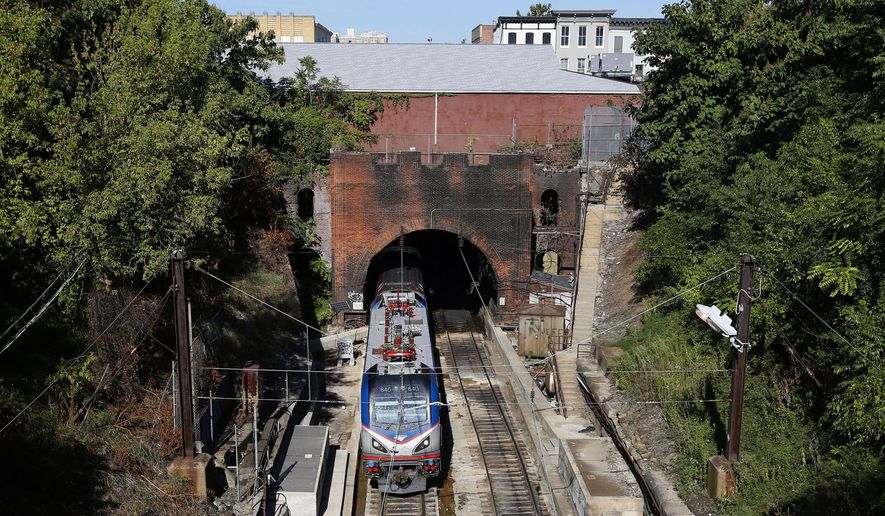WASHINGTON (AP) — Ulysses S. Grant was still president when workers finished the Baltimore and Potomac Tunnel, which connected Philadelphia and Washington through rail travel for the first time.
But 150 years later, the tunnel that runs under some of Baltimore’s residential neighborhoods is more of a chokepoint than a lifeline. There’s only one track, and trains need to slow down to just 30 mph (48 kilometers per hour) to navigate a tight turn on the southern end.
It’s a problem that President Joe Biden knows well, having commuted from Delaware to Washington on Amtrak for decades while serving as a U.S. senator. Last week he recalled walking the length of the tunnel, illuminated only by lights on a string as water dripped from the roof.
“There’s a great worry,” he said, “that part of it could collapse.”
The tunnel is slated to be replaced with help from the $1 trillion bipartisan infrastructure legislation championed by the Democratic president, and he plans to visit on Monday to talk about the massive investment.
Once completed roughly a decade from now, the new tunnel is expected to have two tracks and allow trains to travel more than 100 mph. It will be named for Frederick Douglass, who escaped from slavery in Maryland and became a prominent abolitionist. The total project, which includes related bridges and equipment modernization, could cost $6 billion.
Biden plans to announce labor agreements that are intended to smooth the tunnel’s completion and ensure good wages for union workers, according to the White House. Maryland has also agreed to commit $450 million for construction.
No money has yet been awarded from the federal infrastructure legislation. However, the law signed by Biden includes $24 billion for rail improvements along the Northeast Corridor, and up to $4.7 billion could be provided for the Baltimore tunnel, covering the majority of its cost.
Gregg Weaver, 69, got to know Biden while working as a conductor during a 42-year career with Amtrak. When he was working the morning shift on a southbound train, sometimes they would have to hold at Baltimore Penn Station because of trouble ahead at the tunnel.
“How’s it look?” Biden would ask as he pondered his schedule on Capitol Hill.
“The tunnel can really complicate the whole thing,” said Weaver, who retired in 2013. “It’s a bottleneck.”
As for Biden, “he rode so much, he probably experienced everything there is to experience,” Weaver said.
Baltimore is the first of Biden’s two trips dedicated to infrastructure this week. On Tuesday, he will travel to New York to talk about plans for another new rail tunnel, this one under the Hudson River.
“It’s going to cut commute times, improve safety, make travel more reliable,” Biden said.
Roughly 200,000 people rode through the current tunnel, which was finished 113 years ago, every workday before the COVID-19 pandemic. But because there are only two tracks, any maintenance or problem threatens to severely constrict travel.
Besides building a new tunnel, the project would rehabilitate the existing version. It was damaged by corrosive salt water that flooded in during Hurricane Sandy in 2012.




Please read our comment policy before commenting.